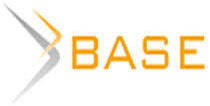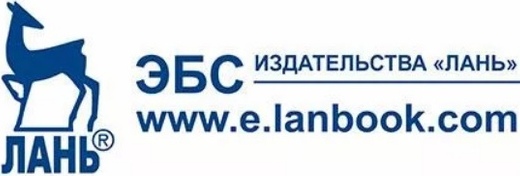BASIC CONCEPTS IN THE THEORETICAL AND PRACTICAL FIELD OF STRATEGIC COST MANAGEMENT
Aннотация
Strategic cost management as a type of activity is in the process of its establishment and manifests itself, first of all, in an abundance of models as local processes, such as the development of "global" strategies. An analysis of enterprises activity in various activity areas proves that, despite the abundance of publications on strategic management, it is rare that an enterprise can not demonstrate the organizational structure of the strategic management. On the contrary, the number of unprofitable enterprises demonstrates that there are serious problems in the organization of the cost management system. The enterprise management becomes more complicated under the conditions of a dynamic complex and uncertain market environment, and this in turn leads to qualitative changes in structure and methods of management. A cost management at the enterprise sets such tasks as identifying the role of cost management as a factor in increasing economic performance, determining costs for the main stages of the product's economic cycle, management functions at the enterprise, calculating costs for operating and geographical segments, production units of the enterprise, calculating the necessary costs per unit of output (works, services), preparation of an information base that allows estimating costs in the selection and adoption of business solutions.
К сожалению, текст статьи доступен только на Английском
Introduction. Strategic cost management is a process of cost analysis that is considered in a broader context, in which the main points of an organization's strategy become well-founded, tangible and formalized. In this context, cost data is used to develop a generalized organization strategy aimed at achieving the goal of work and the company's sustainable advantage over competitors and ensuring its implementation.
The cost management is not an end in itself, it should ensure the development and implementation of an organization's business strategy.
An initial for the evaluation of strategic alternatives is information on the projected level of costs by types of enterprise activities and types of products. Do not lead to the necessary returns (profitability) and strategies that are not cost-justified in comparison with the expected income can not be considered acceptable.
Main part. Summarizing the literature sources of leading foreign and domestic scientists, we can distinguish the following basic concepts of cost management (table 1):
1) The concept of cost-creating factors;
2) The concept of the value chain;
3) The concept of transaction costs;
4) The concept of cost-effectiveness;
5) The concept of functional cost accounting;
6) The concept of strategic positioning;
7) The concept of economic added value.
Table 1
Basic concepts of cost management
№ | Name of the concept | Founders | Period of occurrence |
1. | Concept of transaction costs | R. Cose and O. Williamson | 1937 (1985) |
2. | Concept of cost-creating factors | Scherer, Oster and others. | 1980s |
3. | Concept of the value chain | M. Porter | 1985 |
4. | Concept of cost-effectiveness | Kovalev | 1980s |
5. | Concept of functional cost accounting | R. Cooper and R. Caplan | 1980s |
6. | Concept of strategic positioning | J. Shank and V. Govindaradzhan | 1990s |
7. | Concepts of economic value added | Stearn Stewart & Co. | in the early 1990s |
We shall consider briefly the essence of each concept.
The concept of transaction costs. As an independent topic, the concept of transaction costs is associated primarily with the names of two economists – R. Cose and O. Williamson. The beginning of the economic theory of transaction costs was published in 1937 in the work of Ronald Cose "The nature of the Firm" (Cose, 1995), for which R. Cose was awarded the Nobel Prize in Economics. And, finally, in 1985 Oliver Williamson presented a scientific article containing a detailed generalizing theory description of transaction costs (Williamson, 1974).
In founders’ opinion of this concept, in order to carry out a market transaction, it is necessary to determine with whom it is desirable to conclude a deal, conduct preliminary negotiations, notify potential partners on the terms of the transaction, gather information, prepare a contract and make sure that the terms of the contract are observed, etc.
It should be noted that this mechanism is currently illustrative of developed countries with a market economy. Accounts receivable is, as a rule, a consequence of non-payments, and as an alternative, bank deposits are rarely used because of the imperfection of these instruments and high risks of such transactions.
A concept assumes that transaction is the basic unit of analysis. In addition, any problem that can be directly or indirectly treated as contractual, must be studied from the point of view of minimizing transaction costs.
In this case, all transaction costs can be divided into:
1) ех аntе (include the costs of negotiating, drafting a contract project and ensuring the implementation of the agreement);
2) ех роst (include the costs associated with poor adaptation to unforeseen events and that occur when the mechanism of transactions is not in compliance with the circumstances of their implementation, the costs of litigation that accompany bilateral efforts to eliminate ex post failures in contractual relations; organizational and operational costs, associated with the use of governance structures, where the parties turn to resolve conflicts; the costs associated with the exact fulfillment of contractual obligations).
Costs that have the nature of transaction costs are treated as an economic category, and the problematics of transaction costs are considered systematically. Transaction costs can be interpreted as the costs of adapting a firm to changing market conditions. The act of economic interaction, contract, transaction in the theory of transaction costs is recognized, as already noted, as the basic unit. The category of "transactions" is understood extremely broadly and is used to refer to the exchange of goods, short-term and long-term transactions, legal obligations requiring detailed documentation and assuming a simple mutual understanding between the parties.
Types of transaction costs:
- negotiating costs;
- information retrieval costs;
- specification and protection of property rights’ costs;
- measurement costs;
- The costs of "politicization" accompany decision-making within the organization. For example, a manager can take unilaterally unprofitable decisions for subordinates;
- costs of opportunistic behavior (a behavior, aimed at obtaining unilateral benefits to the detriment of a partner, non-observance of the terms of the transaction), that is the costs associated with difficulties in accurately assessing the postcontract behavior of another participant in the transaction.
In the strategic management the concept of transaction costs is becoming increasingly important.
The concept of the cost driver is traditional for most types of entrepreneurial activity (Patrusova, Slinkova, 2015). This concept was formulated in the 1980s of the 20th century in the works of Scherer, Oster, Kaplan, Dickin and Maher, Porter, Cooper and others. Understanding the complex interaction of the set of cost-creating factors in a real situation means understanding the behavior of costs (Shank, Govindarajan, 1999).
According to this concept, the cost-creating factors can be divided into 2 main groups:
- functional (operational) factors (related to the ability of the enterprise to function successfully);
- structural factors (related to the structure and technology of production).
Among the scientists whose works are devoted to the study of the concept of cost-creating factors, there is no clear agreement on the list of the main factors of cost changes. Therefore, we will determine that the key ideas of this concept are as follows:
- not all strategically determining factors are equally important at any time, but some of them are the most important in each case;
- a specific analysis system that is necessary to understand the position of the enterprise exists for each cost factor;
- it is more useful in a strategic sense to explain the cost position in the language of structural alternatives and exceptional skills that form the competitive position of an industrial enterprise;
- the link with volume is not the most significant factor for explaining the cost dynamics in strategic analysis;
- functional and structural factors affect the cost of production.
The concept of the valuechain was first formulated by M. Porter and differs radically from the concept of added value. The essence of the concept is the need to go beyond the organization to more efficiently cost management and shift the emphasis in cost analysis to processes that occur outside of the organization (Porter, 1985).
The concept of the value chain is based on an expansive approach to the formation and management of costs. It proposes to take into account the cost-creating mechanisms along the entire value chain within the agreed set of activities, starting from the original raw source and ending with the finished products or services received by the end users.
Of course, there is a rational kernel in this concept, however, in the domestic business practice proposed cost management approaches in it are difficult to implement for a number of reasons (due to the lack of necessary information and additional costs for obtaining information, instability of the economic situation, etc.). Nevertheless, the analysis of the value chain is the first key to effective cost management.
The concept of alternative costs, or costs of missed opportunities. The essence of the alternative costs’ concept is that any financial decision is taken as a result of comparing alternative costs, and the practical implementation of any management decision in this case is associated with the rejection of some alternative option (Cose, 1995).
The effect of the concept under consideration extends:
- on the adoption of financial decisions of a current nature, for example, with respect to management of accounts receivable, since accounts receivable is equivalent to the "deadening" of current assets. It should be noted that many enterprises are forced to maintain a certain level of accounts receivable, giving buyers the right to install payments and encouraging the acceleration of payment for goods, works and services sold on credit, price discounts to maintain the market, etc.;
- for current operating costs (for example, delivery of material and technical values by specialized structures and / or own transport);
- on the adoption and implementation of investment decisions, for example, in assessing options for possible investment of capital;
- on the organization of internal management, in particular, on the creation of a management control system. Any control system involves costs that can in principle be avoided, and on the other hand, the lack of systematic control can lead to much greater losses.
It should also be borne in mind that in strategic management, alternatives are desirable to take into account, although in financial accounting these costs are usually not taken into account.
The concept of functional cost accounting. In the late 1980's, R. Cooper and R. Kaplan (Cooper and Kaplan, 1988) had developed a more formal approach to assigning overhead costs for product and calculating the costing. They called this approach as a functional cost-accounting, or activity-based costing (ABC). ABC systems are often used to calculate production costs, manage and control costs, and analyze profitability (Nikolayeva, 2003).
With respect to strategic management accounting for the allocation of production overhead, it is necessary to consider indicators that differ from the volume of production.
The ABC approach identifies the activities that lead to costs and explores the main cost drivers for these activities. This provides a deeper understanding of costs in the long run period.
In the context of the ABC method, the actions performed at these stages are called functions, and on the government base in functions, there are several analytical methods using ABC information.
There are three independent factors that are the main reasons for the practical application of ABC:
- the level of competition has increased significantly, which requires effective cost management;
- the costs of collecting and analyzing the information necessary for the ABC have decreased;
- the process of structuring costs has changed significantly.
The ABC concept assumes that all functions that support business processes must be taken into account when calculating the cost of production.
The business function is understood as a type of activity of the enterprise. These functions include such activities as technology development, production, logistics, product distribution, information support, service maintenance, financial administration and general management.
The formation of a system of budgets at the enterprise is one of the directions of using the ABC method. When forming the system of budgets, the ABC model is used to determine the resource requirements, as well as the volume and cost of work.
The concept of ABC allows us to understand the causes that involve change in overhead expenses over time, because it recognizes that in the long run most of the production costs are permanent.
The received ABC-information allows us to make informed and targeted decisions about the allocation of resources, based on an understanding of the interrelations of functions and value objects, cost factors and scope of work. All of this allows to form a realistic system of budgets.
As a highly effective universal method of cost saving, ABC is widely used in economically developed countries, for example, in Japan, USA, Canada, England, Germany and others. Not only the geography of distribution of ABC is constantly expanding, but also the scope of its application. It is successfully used by industrial giants, such as General Motors, Hewlett-Packard, Chrysler, General Electric (USA), Peshine and Danone (France), and its application goes far beyond the traditional way to allocate invoices. Japanese companies not only have an advantage in productivity, but also have lower overheads as a percentage of total costs compared to US or European countries. This shows the effectiveness of management and organizational systems.
The ABC concept is the basis for other management methods of the enterprise, such as:
ABB (Active Banking Budgеting) – budgeting based on the performed actions (functions, operations);
ARP (Aсtivitу Rеsоurсе Plаnning) – functional resource planning;
ABM (Aсtivitу Bаsеd Mаnаgеmеnt) is a control based on actions (functions, operations).
The next concept – strategic positioning – was proposed in the 90s by J. Shank and V. Govindaradzhan (Lebedev,2003), already known to us as experts on the strategic use of information on costs.
The implementation activities differ from peers or the implementation of similar activities, but in other ways and represent strategic positioning. The inclusion in the field of management accounting and cost analysis of detailed information on the strategic development of the enterprise, industry and / or the economy as a whole is a key idea of this concept. Increased attention to strategic positioning is one of the keys to strategic cost management. To highlight the key points in accounting and management accounting, the authors of this concept applied information on costs to the development of the company's strategy on the way to achieving competitive advantages.
Analysis and accounting are traditionally considered from the perspective of the valuation of business transactions reflected in accounting. Considering that accounting is not an end in itself but serves as a means for achieving business success, when evaluating the system and accounting methodology adopted at the enterprise, it is proceeded from the position of their conformity or inconsistency with the adopted development strategy.
An enterprise can withstand competition:
- offering superior products (product differentiation and focusing);
- supporting low costs (leadership based on costs) (Vladymtsev, 2008).
The concept of economic added value (есоnоmiс vаluе аddеd – ЕVA) has found wide application in the mid-1990s. The concept was developed by specialists of the consulting company Stеrn Stеwаrt & Co on the basis of the theoretical developments of F. Modeliani and M. Miller. Reseraches in the 1990s show that the EVA provides more useful information in comparison with accounting aspects, such as return on equity, accounting profit, or earnings growth rates per share (Zozulya, 2018; Kovalev, 2006).
The concept of value added is widespread in Western theory and practice. It represents the modern traditional paradigm of cost management along with the concept of cost-creating factors.
According to the concept of value added, cost components are considered at all stages of adding value, starting with purchases of raw materials and ending with the sale of products (works and services). Maximizing the difference (value added) between purchases and sales is a key point in the value-added concept. But most of the material costs fall from the area of managers and analysts attention, which is of no small importance for material-intensive industries. Nevertheless, this approach to the analysis of the behavior of costs can be fully justified for non-material-intensive works and services.
The process of cost management based on value added in the opinion of economists:
- on the one hand, it starts too late and does not allow us to take advantage of supplier’s feedbacks, since many management decisions can be reduced to "no" because of their inconsistency with the supplier's value chain;
- on the other hand, it ends too early and omits all the possibilities of using customer relations, since for successful positioning in the market it is necessary to take into account not only out-of-pocket expenses, but also the consumer's costs after the purchase of goods or the receiving services.
It is difficult to disagree with this, because stopping the cost analysis at the time of implementation nullifies all the possibilities of using customer relationships, which can be as important as the relationships with suppliers.
EVA is the only indicator for assessing the value of a business since its inception and the financial indicator for assessing the performance of activities, which more accurately than others reflects the value of the true economic profit of the enterprise. It has become a consistent continuation of such indicators as ROI (Rеturn оn Invеstmеnt) and ROCE (Rеturn оn Cарitаl Еmрlоуеd).
Economically added value is an indicator whereby the profit of a corporation is measured. At the same time, traditional financial reports are transformed into EVA-reports by correcting possible distortions in the operating activity of the enterprise, which are caused by the requirements of accounting legislation and adjustment of operating profit.
Mathematical accuracy is an indisputable advantage of EVA. The formula for calculating EVA in general form will be as follows:
EVA = NOPAT - C × WACC,
where NOPAT (nеt ореrаting рrоfit аftеr tахеs) – net operating profit less income tax;
C – the company's capital,
WACC (wаitеd аvеrаgе соst оf сарitаl) – weighted average capital cost.
Thus, EVA is defined as the difference between the net profit and the value of the company's own capital used to obtain it.
EVA is a certain quality indicator of management decisions: a constant positive value of this indicator indicates an increase in the company's value, while a negative one indicates a decrease in its value. The concept of EVA becomes the main principle of evaluating the company's activities.
In strategic management the EVA criterion is used in combination with such common strategic analysis tools as the matrix of market attractiveness, the matrix of the Boston consulting group and competitive positions, and others.
It should be noted that this concept was used as a cost management tool recently, in spite of that it is not a new concept in the economy. Today more than 250 leading companies with a world-wide name use the concept of EVA (Cоса-Cоlа, Briggs & Strаttоn, AT&T, Quаrkеr Оаts, etc.).
Conclusions. Based on the foregoing, it can be concluded that the listed cost research concepts are not homogeneous.
Some concepts (value added, functional cost-accounting factors) are related to accounting and are based on accounting characteristics of costs.
Other concepts (a chain of values, structural cost-creating factors, strategic positioning, ABC) consider costs as an object of management more in the economic plan, rather than in accounting.
Separate concepts (transaction costs) combine both economic and accounting aspects.
Specified cost management concepts are effective tools in the study of costs. However, until recently in the economic literature the greatest attention is paid to the concept of strategic positioning, a chain of values and cost-creating factors. The combination of these three concepts is the most powerful way to analyze costs for technological change - strategic cost management.
Conflicts of Interest: authors have no conflict of interests to declare.
















Список литературы
Список использованной литературы появится позже.